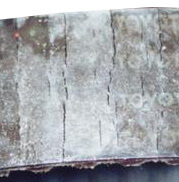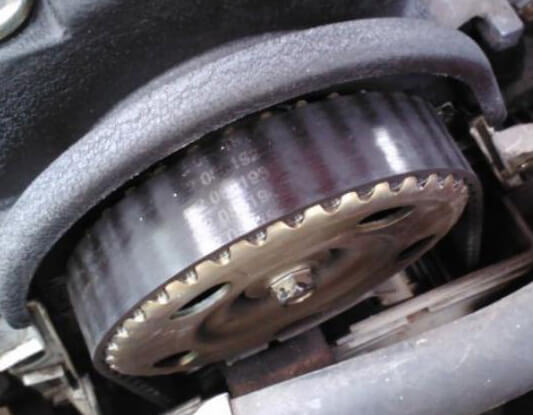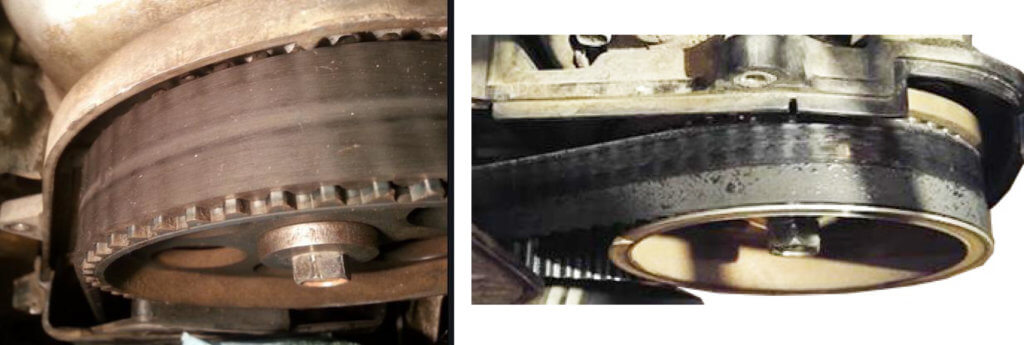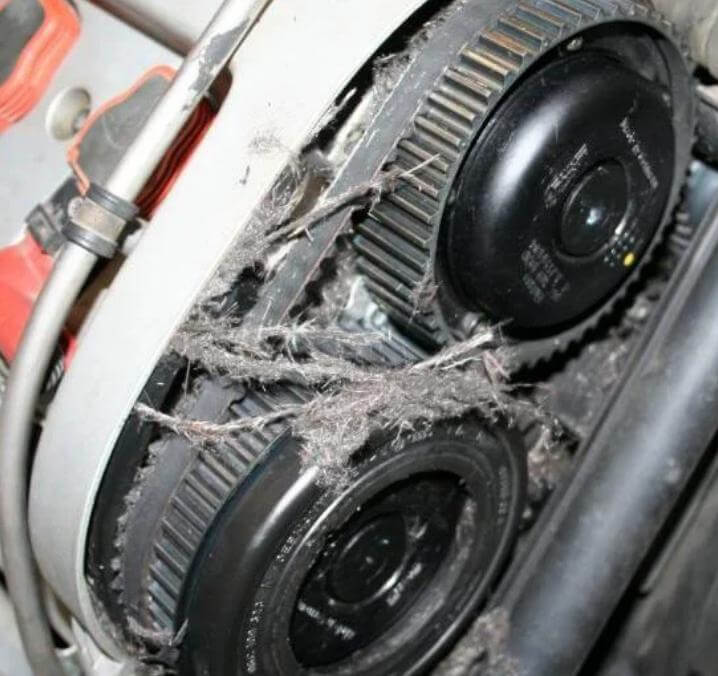Timing belt condition inspection
Check timing belt condition
How to check timing belt condition
If you’re the original owner of a vehicle equipped with a timing belt you should follow the carmaker’s recommendation for time and mileage intervals for a timing belt change. But if you’re not the original owner and don’t know how many miles are on the current timing belt or don’t know how long it’s been in the engine, you’ll have to check it yourself.
Step 1: Remove upper timing belt cover
Most engines have at least one removable timing belt cover. If yours has multiple covers, you only need to remove one to inspect the timing belt.
Step 2: Inspect the backside of the timing belt.
Glossy or gritty appearance on the timing belt
The backside of a worn timing belt will appear either glossy or  gritty. A glossy look is from running against a smooth idler roller, while a gritty appearance is an indication of rust or corrosion on an idler roller that is constantly wearing away the backing of the belt. If you see either, replace the belt now.
gritty. A glossy look is from running against a smooth idler roller, while a gritty appearance is an indication of rust or corrosion on an idler roller that is constantly wearing away the backing of the belt. If you see either, replace the belt now.

Cracks on the timing belt
Age, ozone, and heat cause a timing belt to crack. Once cracks appear on the backside of the belt, failure is imminent. Replace the belt ASAP if you see cracks like these.

Wear patterns on the timing belt
An uneven wear pattern on the backside of the belt is an indication of impending idler roller failure. It indicates that the bearing is starting to bind and cause the timing belt to slide over the idler instead of rolling over/under it. If you see uneven wear on the backside of the timing belt, replace it and all the idler rollers.

Step 3: Inspect the teeth on the timing belt
Smooth teeth on the timing belt
Timing belt teeth (teeth) should be smooth and symmetrically shaped. If the teeth have an hourglass shape, the timing belt is won and should be replaced.
Missing timing belt teeth
Rotate the engine by hand and inspect the teeth/teeth on the entire belt. If you see any missing teeth, replace the belt immediately. The maximum allowable tolerance for missing or damaged timing belt teeth is 0.

Step 4: Inspect the timing belt for fraying
Edge fraying
Examine the front and back edges of the belt for any signs of fabric fraying. That’s a sign of a worn/cocked idler roller that’s not allowing the belt to run in the center of the pulleys. If you see fraying, replace the belt and the worn idlers.

Posted on by Rick Muscoplat
